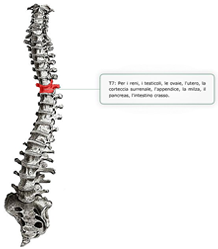Chiropractic and Tarsal Tunnel Syndrome
Description:

Tarsal Tunnel Syndrome (a.k.a. Posterior Tibial Neuralgia) is a compression neuropathy in which the tibial nerve, a branch of the sciatic nerve, is impinged as it travels through the tarsal tunnel (found along the inner leg behind the medial malleolus).
Signs and Symptoms
Tarsal Tunnel Syndrome is often asymptomatic, but there may be clinical signs such as high arch and a claw-like appearance to the toes. Callouses are usually found underneath the toes.
When there is pain, it is usually of a burning type, or paresthesia in the toes, and along the sole of the foot. Pain may also radiate up the leg.
Symptoms may be worse at night, and relief is found by moving the limb, getting out of bed, or hanging the limb over the edge of the bed.
The condition is commonly mistaken for a peripheral vascular disease, or diabetes, particularly with older patients. In younger patients it is often mistaken for a disc problem, especially when a herniated disc has been found on a MRI.
Chiropractic / Applied Kinesiology Approach to Tarsal Tunnel Sydrome

An integral part of the Chiropractic approach to Tarsal Tunnel Syndrome involves manual adjustments to the bones of the foot, particularly the calcaneus, which subluxates posteriorly.
In true Tarsal Tunnel Syndrome, the intrinsic muscles of the foot may become weak and atrophied due to entrapment of the tibial nerve. When this is the case, a highly specific form of manual therapy is applied to the muscles, fascia and tendons in order to restore neurological function. Most cases of Tarsal Tunnel Syndrome respond well to the conservative approaches used by Dr. Morrison, and recovery is often rapid when the pressure on the nerve is relieved.
Back | Schedule an appointment
 SCHEDULE AN APPOINTMENT
SCHEDULE AN APPOINTMENT








